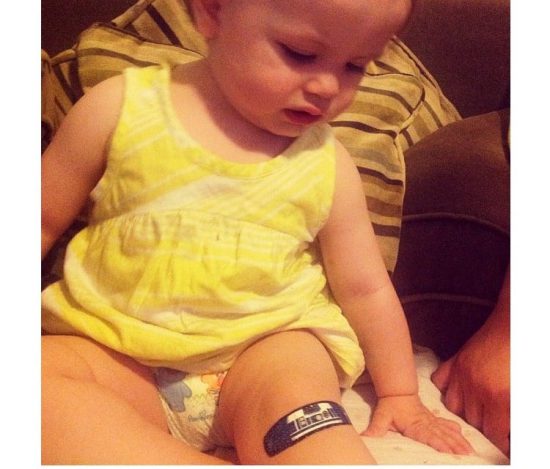Basic first aid kit items are just what they sound like: basic. You don’t want to discover you’ve run out of Bandaids when your child gets a scrape or minor burn. You want to be ready with everything you need.
And let’s face it, accidents happen. Kids fall down or get cuts and scrapes. Especially during the summer months when kids are out exploring the neighborhood or doing crafts or cooking projects at home.
It’s scary to sustain a wound. But it helps to see a parent coming to the rescue with that basic first aid kit. Just the sight of that kit tells a child that everything is under control—Mom and Dad know just what to do. Reassurance is half the battle of getting over any small trauma.
In stocking your basic first aid kit, the first thing you want to do is choose your container. A plastic fishing tackle box is a great choice, because it’s inexpensive, lightweight, has handles, and lots of compartments. You can stash it anywhere (out of reach of children, of course!) and it doesn’t take up a lot of room.
Now for what goes inside your basic first aid kit. Here’s a list:
Basic First Aid Kit Items
- First aid manual
- Adhesive tape
- Adhesive bandages (nonstick), assorted sizes
- Aluminum finger splint
- Antibiotic ointment
- Antiseptic solution and towelettes
- Breathing barrier
- Butterfly bandages, assorted sizes
- Cotton balls and cotton-tipped swabs (Q-Tips)
- Disposable non-latex gloves, a few pairs
- Duct tape
- Elastic wrap bandages
- Eye pad
- Eyewash solution
- Gauze rolls, assorted sizes
- Instant cold packs
- Petroleum jelly or other lubricant
- Plastic bags, assorted sizes
- Safety pins, assorted sizes
- Scissors
- Soap or hand sanitizer
- Syringe or medicine cup or spoon
- Thermometer
- Tooth Preservation Kit
- Triangular bandage
- Turkey baster or other bulb suction device or syringe for flushing wounds
- Tweezers
Medicaments
- Aloe vera gel
- Antacids
- Anti-diarrhea medication
- Antihistamine, for instance diphenhydramine
- Calamine lotion
- Cough syrup
- Epinephrine shot (if prescribed by doctor)
- Hydrocortisone cream
- Laxative
- Pain relievers, such as acetaminophen (Tylenol) and ibuprofen (Advil)
Emergency items
- Cell phone with solar charger
- Emergency phone numbers such as family doctor, pediatrician, poison hotline (in U.S. 800-222-1222) local emergency services, emergency road service providers
- Emergency space blanket
- Insect repellant
- Medical consent forms for each family member
- Medical history forms for each family member
- Small (waterproof) flashlight or headlamp plus extra batteries
- Small notepad and waterproof pen
- Sunscreen
- Waterproof matches
- Whistle
Basic First Aid Kit Checkup
The items in your basic first aid kit may need to be replaced from time to time. Some supplies will have expiration dates. The batteries for your flashlight may burn out and need replacement. And of course, if you use something up, you’ll want to replace it as soon as possible. You don’t want to get caught shorthanded in an emergency.
Make sure to read the first aid manual in your kit when you’re not stressed out over an emergency. It’s a good idea to be familiar with the basic techniques of first aid care. You (and your child) are less likely to panic if you know what to do.
Stay safe!
